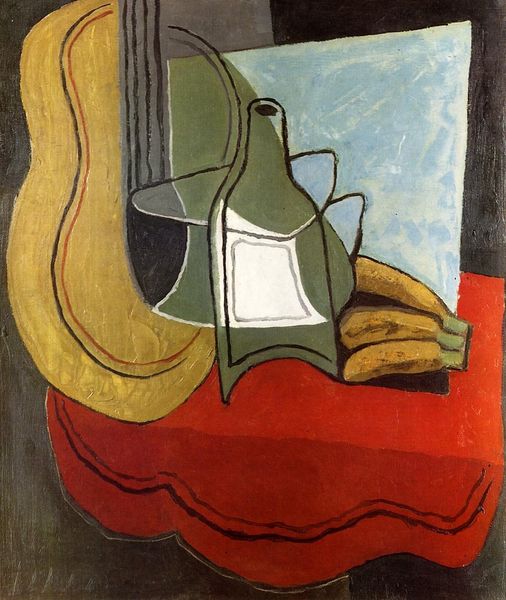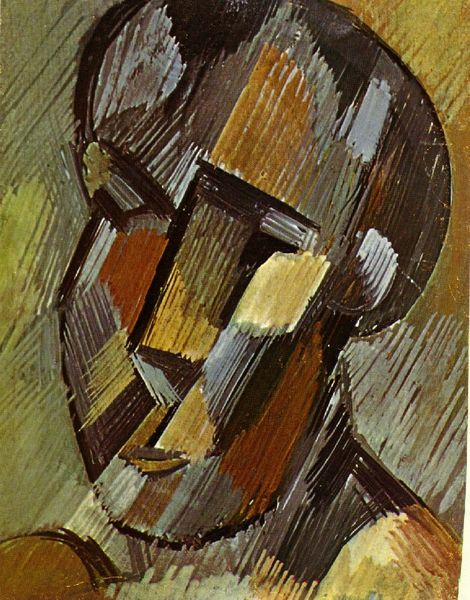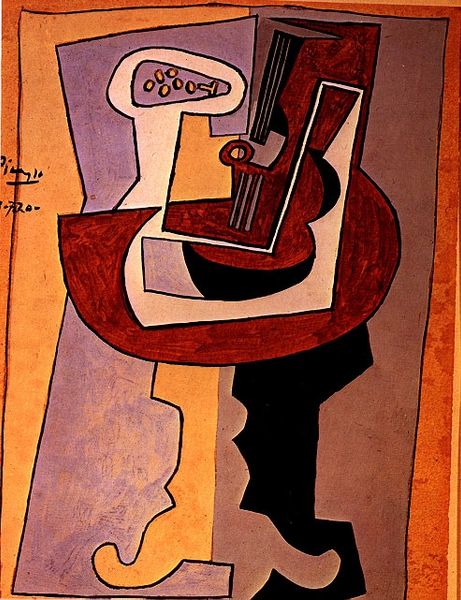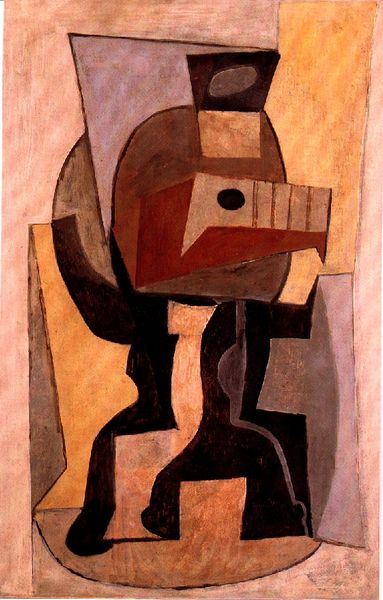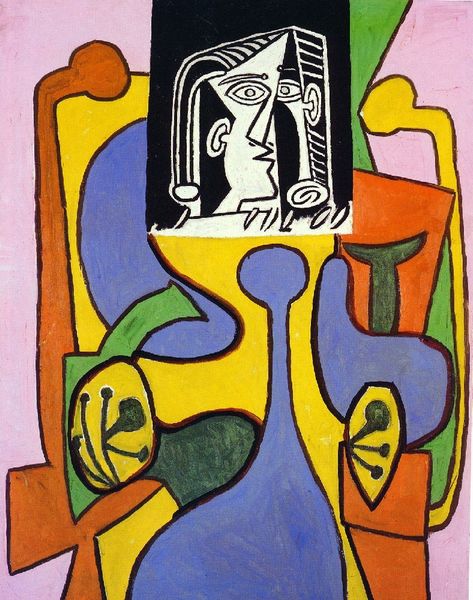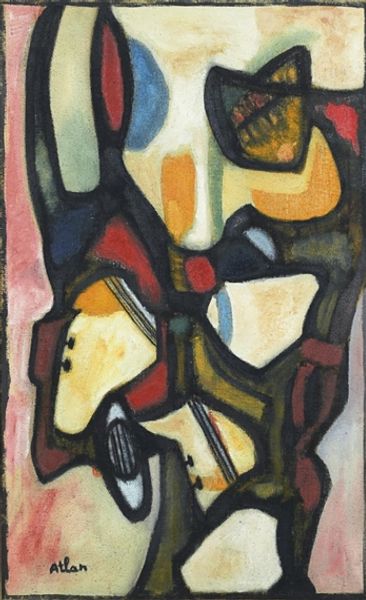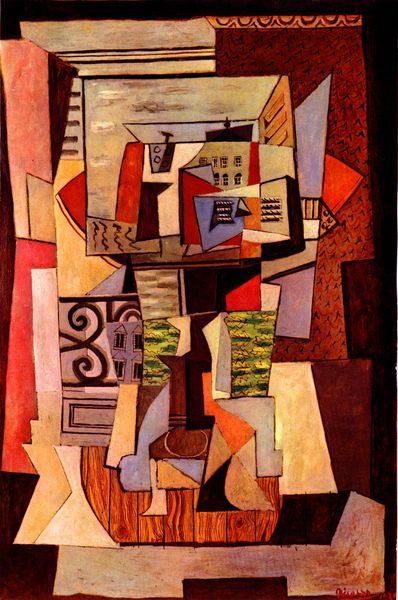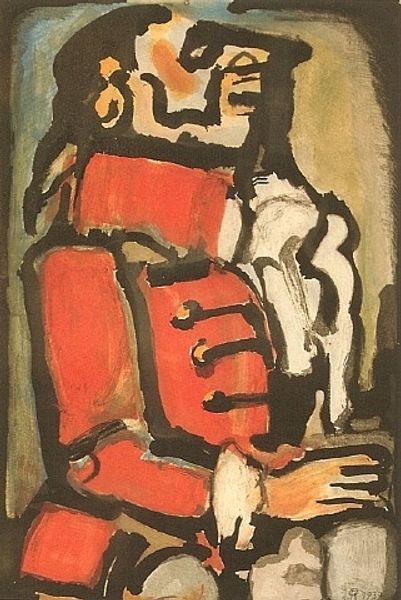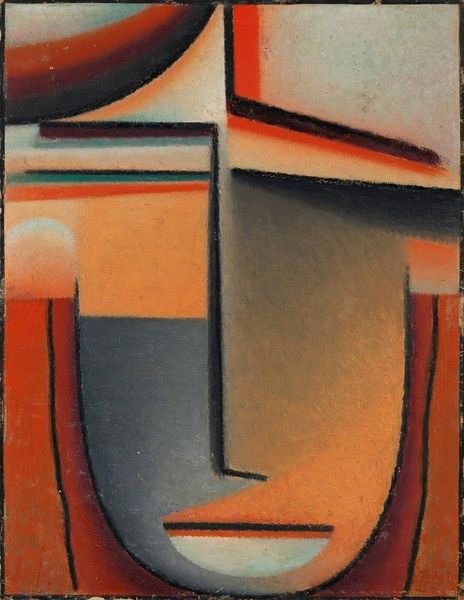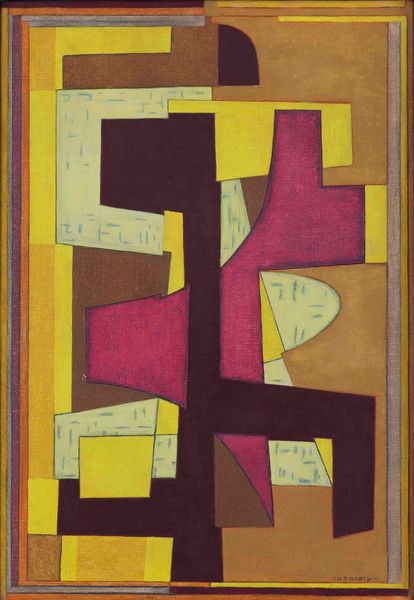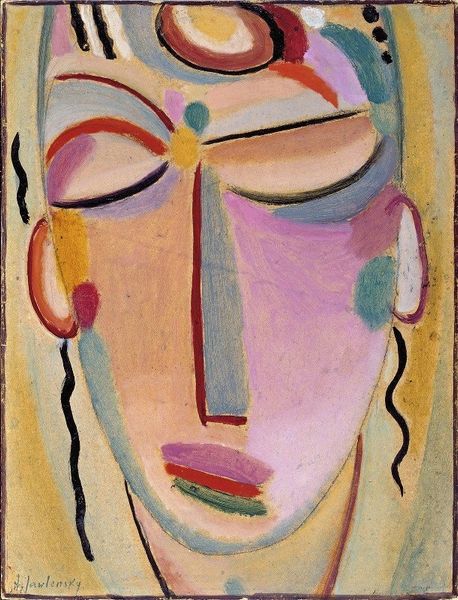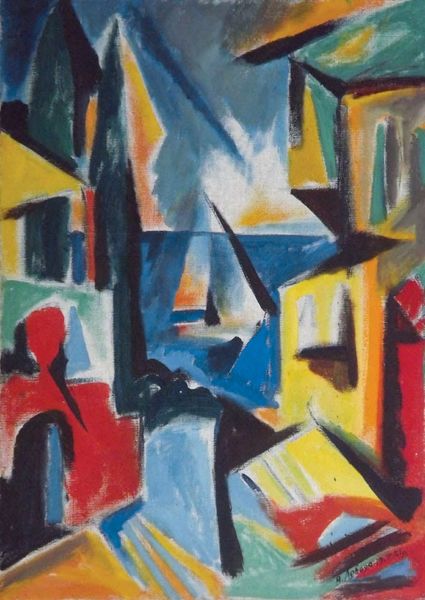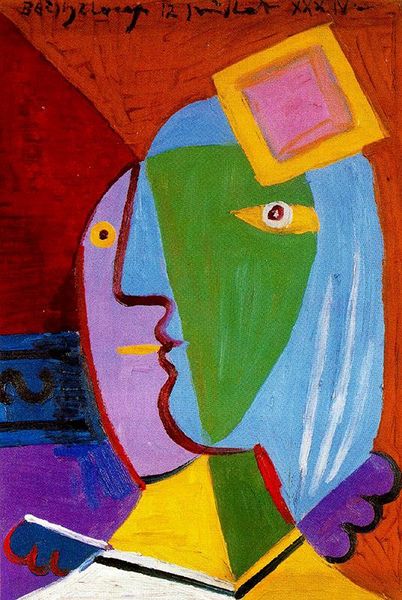
mixed-media, painting
#
portrait
#
art-deco
#
cubism
#
mixed-media
#
painting
#
painted
#
geometric
#
painting art
#
modernism
Dimensions: 27 x 21 cm
Copyright: Public domain US
Curator: We’re standing before Pablo Picasso’s "Man with Mandolin," a painting realized with mixed media, dated 1920. Editor: The geometry strikes me first. It's all sharp angles and softened forms—almost like a robot attempting a folk song. I sense a tension, a fragmented harmony. Curator: Absolutely. This work comes during a period where Picasso grapples with the transition between Analytical and Synthetic Cubism, a shift influenced by the broader artistic and political dialogues of the time, especially in the aftermath of World War I. Consider how national identity and artistic expression were being questioned. Editor: So the abstraction itself reflects a kind of brokenness? Is the faceting a critique of representation? The man with the mandolin is not only simplified, he is disjointed. And how does the iconography of a musician, a player of such an accessible instrument as the mandolin, complicate what seems like the exclusivity of high modernism? Curator: That tension is at the heart of it. We see Picasso engaging with mass culture while also dissecting it through the lens of modernism. Think about the rise of popular music during this period and its connection to social movements. How is Picasso both embracing and deconstructing tradition? Editor: I also note the somber colors; the reds and grays give it an air of reflection rather than celebration. It feels internalized. How might this muted palette affect the interpretation, steering it away from mere formal experimentation toward a deeper commentary on the human condition after immense trauma? Curator: Precisely. The limited color palette and the geometric fracturing contribute to a sense of alienation and introspection that resonate with the post-war sentiment. It reflects a society grappling with its own fragmented identity. Editor: For me, this prompts so many ideas around what art can say about trauma and identity through the formal languages of painting. Thanks for expanding this painting for me! Curator: It's always about digging deeper, isn't it, especially into the socio-political conversations that fuel art's continuous transformation.
Comments
No comments
Be the first to comment and join the conversation on the ultimate creative platform.
